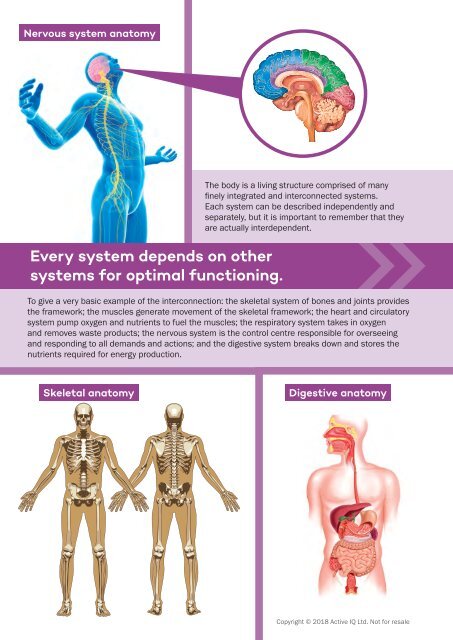Create successful ePaper yourself
Turn your PDF publications into a flip-book with our unique Google optimized e-Paper software.
Nervous system anatomy<br />
Every system depends on other<br />
systems for optimal function<strong>in</strong>g.<br />
The body is a liv<strong>in</strong>g structure comprised of many<br />
fi nely <strong>in</strong>tegrated <strong>and</strong> <strong>in</strong>terconnected systems.<br />
Each system can be described <strong>in</strong>dependently <strong>and</strong><br />
separately, but it is important to remember that they<br />
are actually <strong>in</strong>terdependent.<br />
To give a very basic example of the <strong>in</strong>terconnection: the skeletal system of bones <strong>and</strong> jo<strong>in</strong>ts provides<br />
the framework; the muscles generate movement of the skeletal framework; the heart <strong>and</strong> circulatory<br />
system pump oxygen <strong>and</strong> nutrients to fuel the muscles; the respiratory system takes <strong>in</strong> oxygen<br />
<strong>and</strong> removes waste products; the nervous system is the control centre responsible for oversee<strong>in</strong>g<br />
<strong>and</strong> respond<strong>in</strong>g to all dem<strong>and</strong>s <strong>and</strong> actions; <strong>and</strong> the digestive system breaks down <strong>and</strong> stores the<br />
nutrients required for energy production.<br />
Skeletal anatomy<br />
Digestive anatomy<br />
Copyright © 2018 <strong>Active</strong> <strong>IQ</strong> Ltd. Not for resale
















